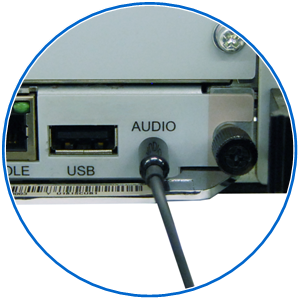Navigation: Configuration > Feature Guide > Voice Service > Music on Hold(MoH) >
Configuring Local MoH Playback (on the Centralized Call Management Network)
If you want to implement local voice playback by setting a local node as the MoH source, perform the following steps:
1.Use an administrator account to log in to the web management system of a X1900 series unified gateway on the main node.
2.Choose System > Network Mode.
3.Select the local node to configure, click Modify, select the local voice playback mode, and click OK.
![]()
When creating a local node, you can directly enable local voice playback. The preceding steps describe how to modify the configuration for an existing local node.
4.In the upper right corner of the web page, click ![]() to save the configuration.
to save the configuration.
Configuring Local MoH Playback (on the Distributed Call Management Network)
If you want to implement local voice playback by setting the peer office as the MoH source, perform the following steps:
1.Use an administrator account to log in to the web management system of a X1900 series unified gateway.
2.Choose Trunk > Trunk Configuration > SIP.
3.Click the trunk for which you want to configure local voice playback.
4.In the trunk configuration dialog box, set Play Call Hold Tone to Peer offer and click OK.
![]()
When creating a SIP trunk, you can directly enable voice playback by the peer office. When reating a SIP trunk, you can directly enable voice playback by the peer office. 3 and and 4 describe how to modify the configuration for an existing SIP trunk.
5.In the upper right corner of the web page, click ![]() to save the configuration.
to save the configuration.
Customizing MoH Using an Internal Custom Audio File
1.Log in to a X1900 series unified gateway using the CLI and access the Config mode.
2.Prepare an audio file and save it to a TFTP/FTPS server.
Audio file description:
ϒ⁄The unified gateway supports only mono audio files with the sampling sequence of 8 kHz and with the sample precise of 8 bit. The mono audio file must be in .pcm or .wav format in the encoding format G.711a. The size does not exceed 2.5 MB for the X1911, X1960,, does not exceed 2 MB for the U1980 that saves the file in the SD card of the SCUB board, and does not exceed 1 MB for the X1960 that saves the file on the SCUA board. If the format of the audio file is incorrect, users who are placed on hold will hear no sound.
ϒ⁄A custom audio file must be named in the target channel number, such as 256.pcm or 256.wav.
ϒ⁄In versions earlier than V200R003C20SPC300, the channel numbers that can be used for MoH are 256 to 260.
ϒ⁄In the V200R003C20SPC300 and later versions, the channel numbers that can be used for MoH are as follows: X1911: 245 to 260; X1960: 245 to 380; U1980/X1981: 245 to 516.
3.Set the IP address of the TFTP/FTPS server (for example, 192.168.1.4).
config system hostip 192.168.1.4
4.Download the custom audio file (for example, 256.pcm) from the TFTP/FTPS server.
config download voicefile channelid 256 filename 256.pcm
5.Configure the MoH source to an internal custom audio file.
ϒ⁄Versions earlier than V200R003C20SPC300
config modify mohvoice source voicefile
By default, the unified gateway sets the latest audio file uploaded in channel 256 to 260 as MoH. If you need to change MoH, upload the new audio file to be used as MoH. You do not need to run the preceding command again.
ϒ⁄V200R003C20SPC300 and later versions
config modify mohvoice source voicefileselfdefine channelid channelid
In the preceding command, channelid specifies the channel number of MoH. You can upload multiple custom audio files, and run the preceding command to specify one as MoH.
6.Run the save command to save the configuration.
Customizing MoH Using an External Audio Source
1.Log in to a X1900 series unified gateway using the CLI and access the Config mode.
2.Configure the MoH source to an external audio source.
config modify mohvoice source external
3.Run the save command to save the configuration.
4.Use a double-headed audio cable to connect an audio output device to the SCUB board, as shown in Figure 3.
Figure 3 Using a 3.5 mm double-headed audio cable to connect the audio output device

The double-headed audio cable is self-prepared. You must use a standard 3.5 mm audio input connector to connect to the unified gateway. The double-headed audio cable is self-prepared. You must use a standard 3.5 mm audio input connector to connect to the unified gateway. Figure 4 shows the appearance and size.shows the appearance and size.
Figure 4 Appearance and size of the audio input connector

5.Start the audio output device. Ensure that the audio output device can play music properly.
Parent Topic: Music on Hold(MoH)